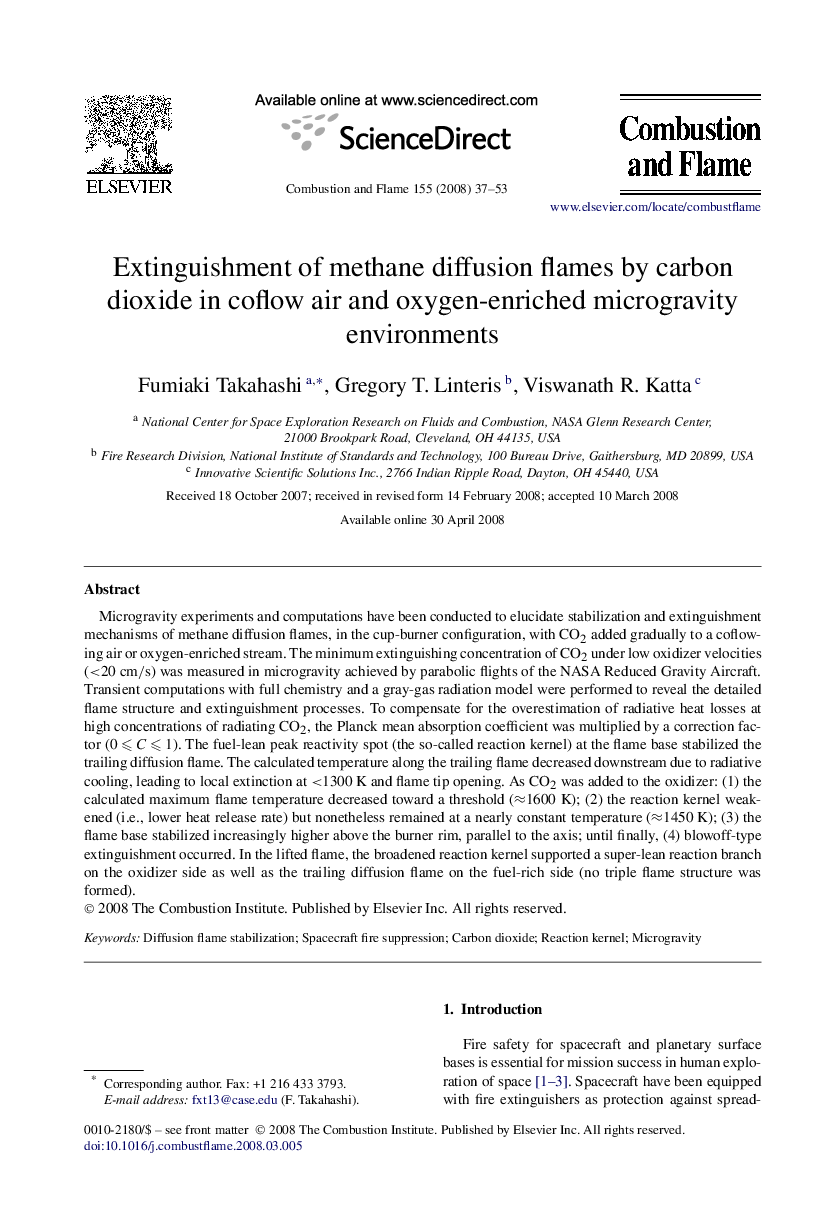| Article ID | Journal | Published Year | Pages | File Type |
|---|---|---|---|---|
| 169518 | Combustion and Flame | 2008 | 17 Pages |
Microgravity experiments and computations have been conducted to elucidate stabilization and extinguishment mechanisms of methane diffusion flames, in the cup-burner configuration, with CO2 added gradually to a coflowing air or oxygen-enriched stream. The minimum extinguishing concentration of CO2 under low oxidizer velocities (<20 cm/s) was measured in microgravity achieved by parabolic flights of the NASA Reduced Gravity Aircraft. Transient computations with full chemistry and a gray-gas radiation model were performed to reveal the detailed flame structure and extinguishment processes. To compensate for the overestimation of radiative heat losses at high concentrations of radiating CO2, the Planck mean absorption coefficient was multiplied by a correction factor (0⩽C⩽10⩽C⩽1). The fuel-lean peak reactivity spot (the so-called reaction kernel) at the flame base stabilized the trailing diffusion flame. The calculated temperature along the trailing flame decreased downstream due to radiative cooling, leading to local extinction at <1300 K and flame tip opening. As CO2 was added to the oxidizer: (1) the calculated maximum flame temperature decreased toward a threshold (≈1600 K); (2) the reaction kernel weakened (i.e., lower heat release rate) but nonetheless remained at a nearly constant temperature (≈1450 K); (3) the flame base stabilized increasingly higher above the burner rim, parallel to the axis; until finally, (4) blowoff-type extinguishment occurred. In the lifted flame, the broadened reaction kernel supported a super-lean reaction branch on the oxidizer side as well as the trailing diffusion flame on the fuel-rich side (no triple flame structure was formed).
